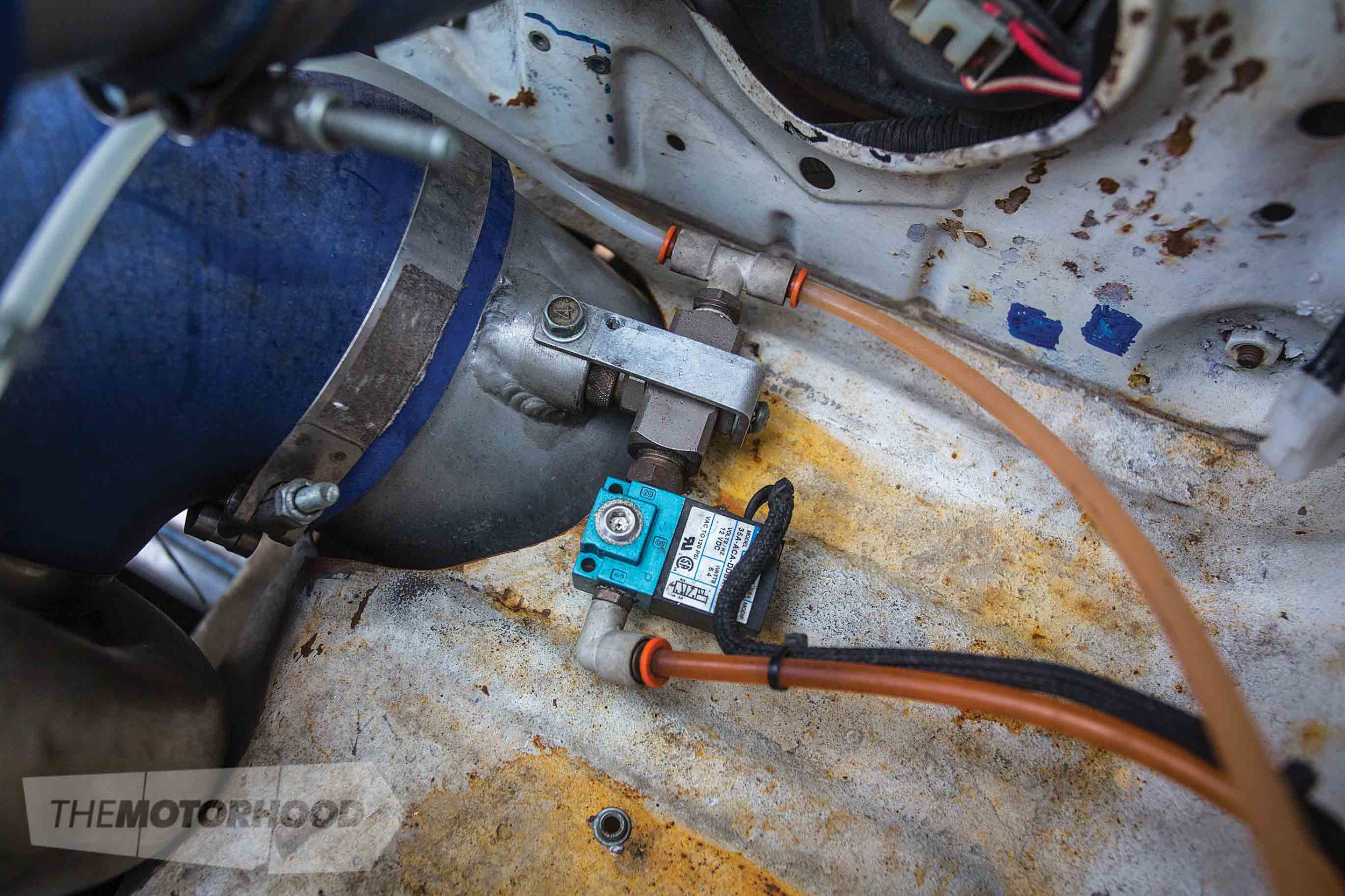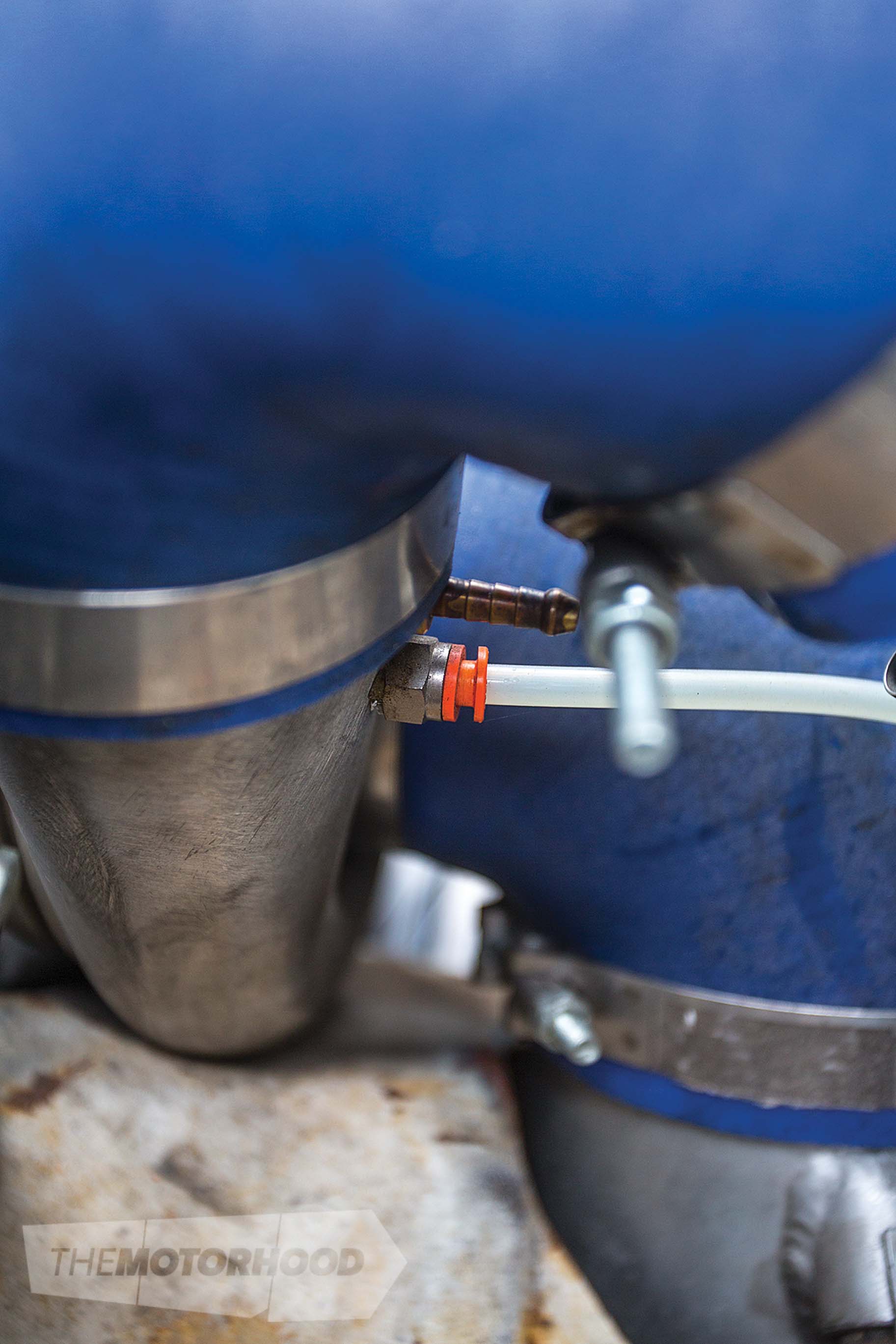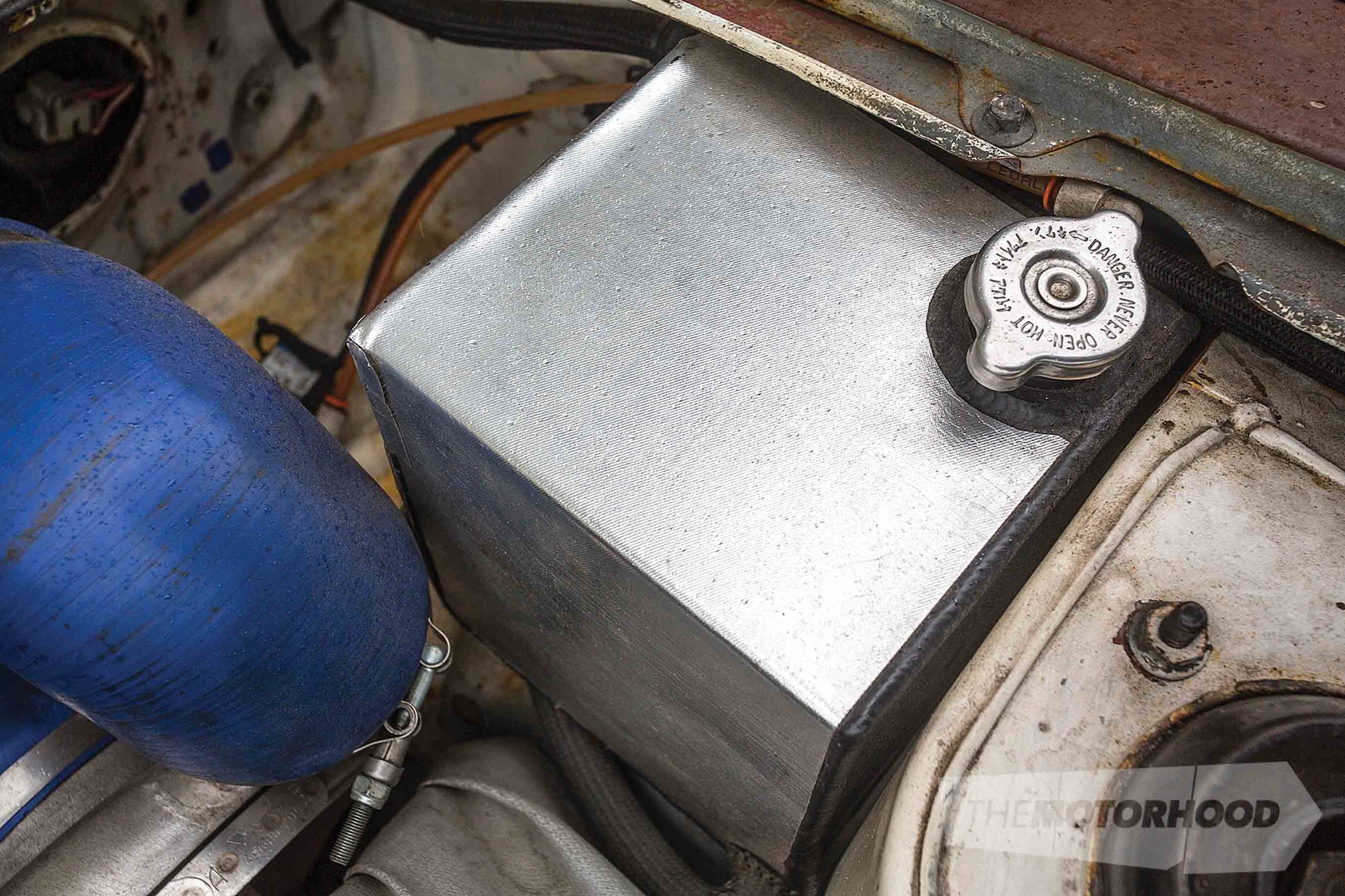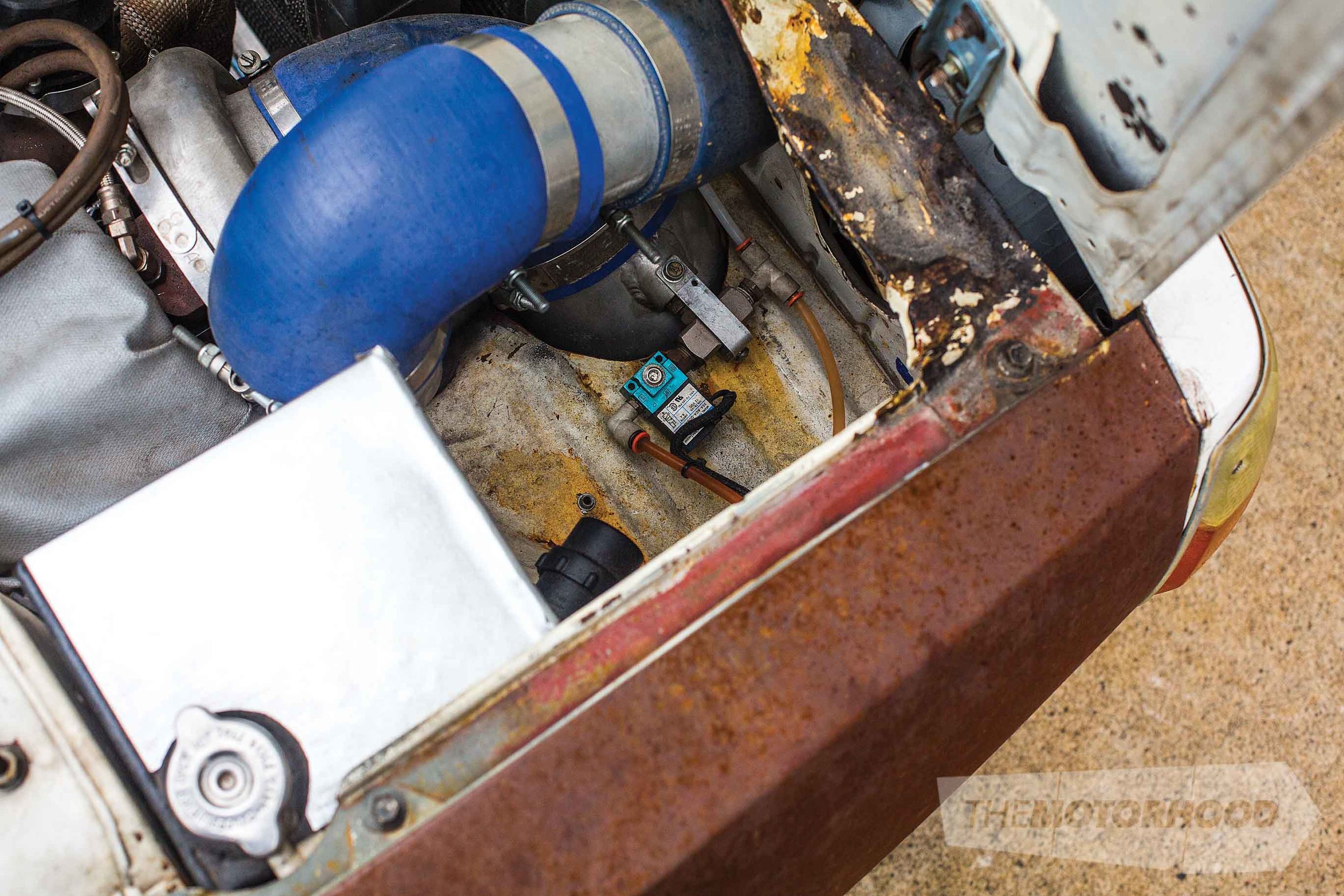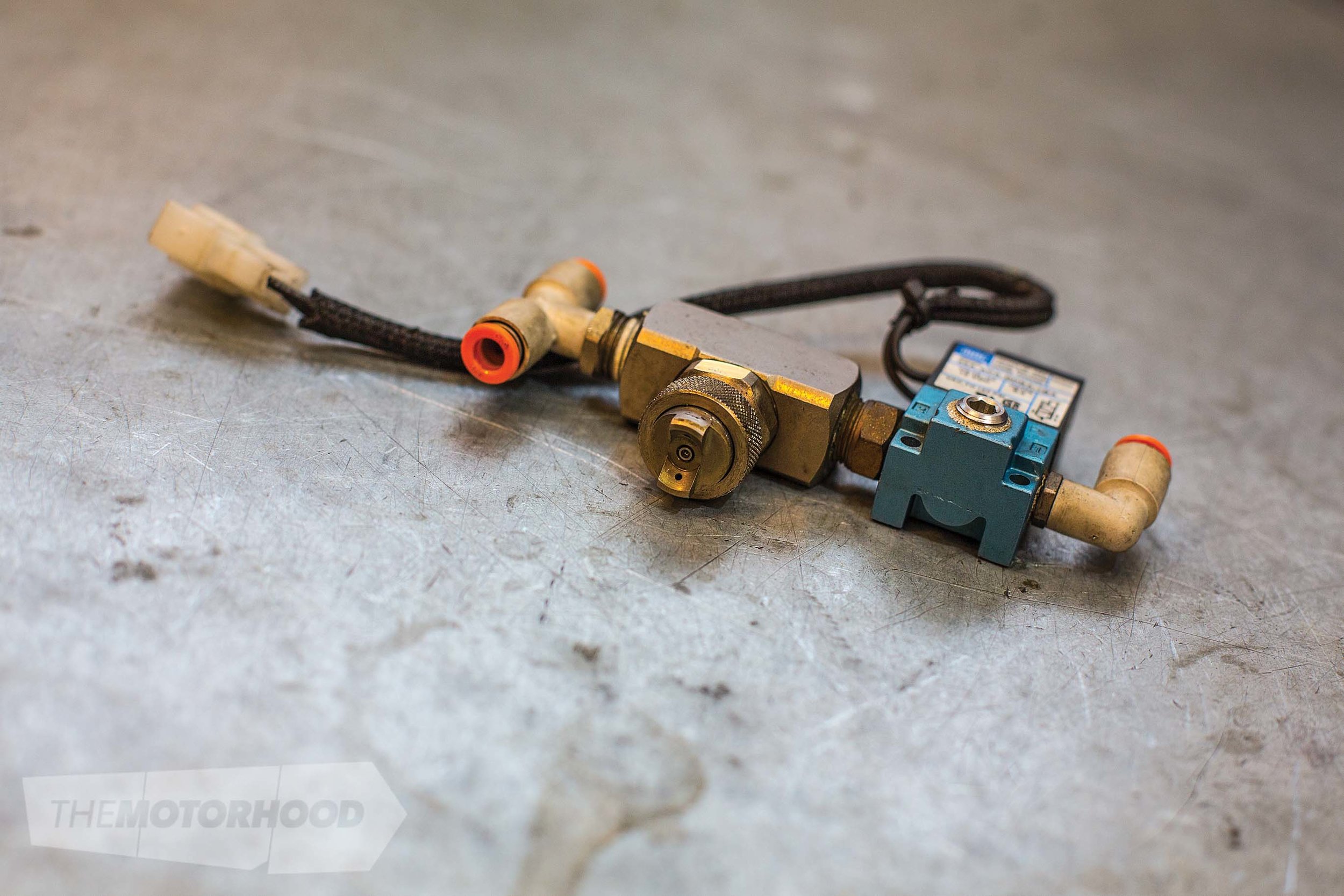data-animation-override>
“We delve into the world of pre-turbo water-injection units to find out the great benefits this simple system can offer your engine”
The search for more power means you’ll always aim for the densest possible air mass inside your combustion chamber. Put simply, the more air you have present in the chamber, the more fuel you can add and the more power you will make. But a few factors will always stand in the way of adding more oxygen. Short of increasing an engine’s actual capacity, you can compress the oxygen to fit more of it into the combustion chamber, via a higher compression ratio; a boost-adder, like a turbo; or both.
This is where problems arise, as thermodynamics come into play. The more you compress that air, the more heat is generated, which can lead to pre-ignition of your combustion mix and then detonation, which can kill your engine really fast. Gasoline will self-combust (with no spark needed) between 246 and 280°C, the temp at which pre-ignition occurs. When you’re tuning an engine for maximum performance, it is just under this temperature that the engine’s maximum safe output is. Tuners call this point of maximum engine performance ‘maximum brake torque’, and the only way to keep the timing that advanced and still add more compression is by cooling the intake charge. If you don’t, you will need to reduce the timing, which you want to avoid doing.
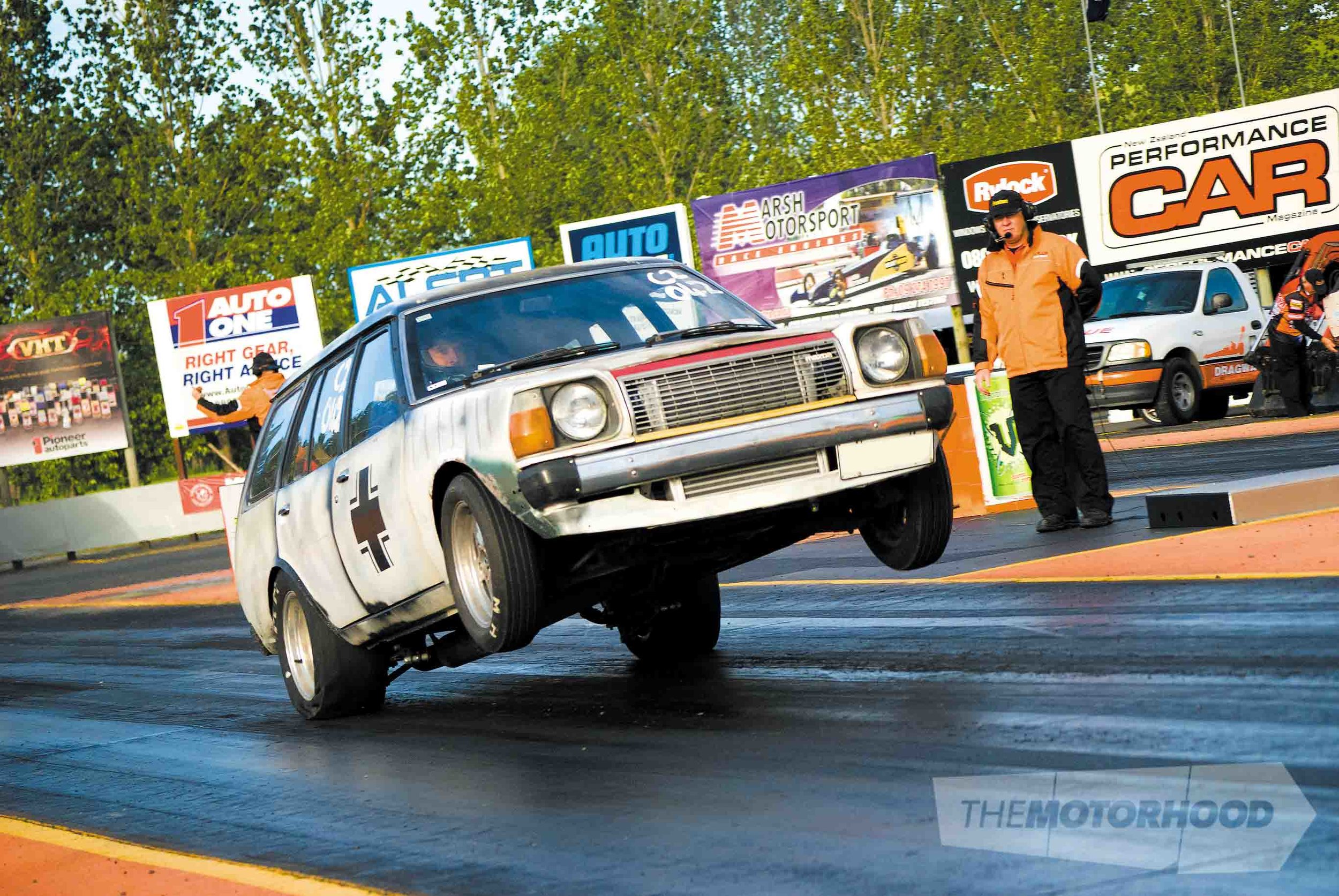
With a turbo or supercharged engine, you’d usually use an intercooler, but it’s often not efficient enough in high-boost applications. This is where a pre-turbo water-injection kit has been proven to work extremely well, with some extra added bonuses that we will explain later.
Like all great performance boosts, the use of this type of injection system can be traced back to wartime, when it was used in planes. It has even been used in some production engines over the years, and the latest BMW M4 employs a version of it.
We spoke to Richard Green of Green Brothers Racing, which has developed its own kit and carried out extensive testing with it. The team runs one on New Zealand’s fastest import’s, which is its workshop hack. The boys have seen great results with these kits on the dyno, as they allow you to take an engine that would normally max out at 335kW (450hp) on pump petrol up to as much as 600kW (800hp).
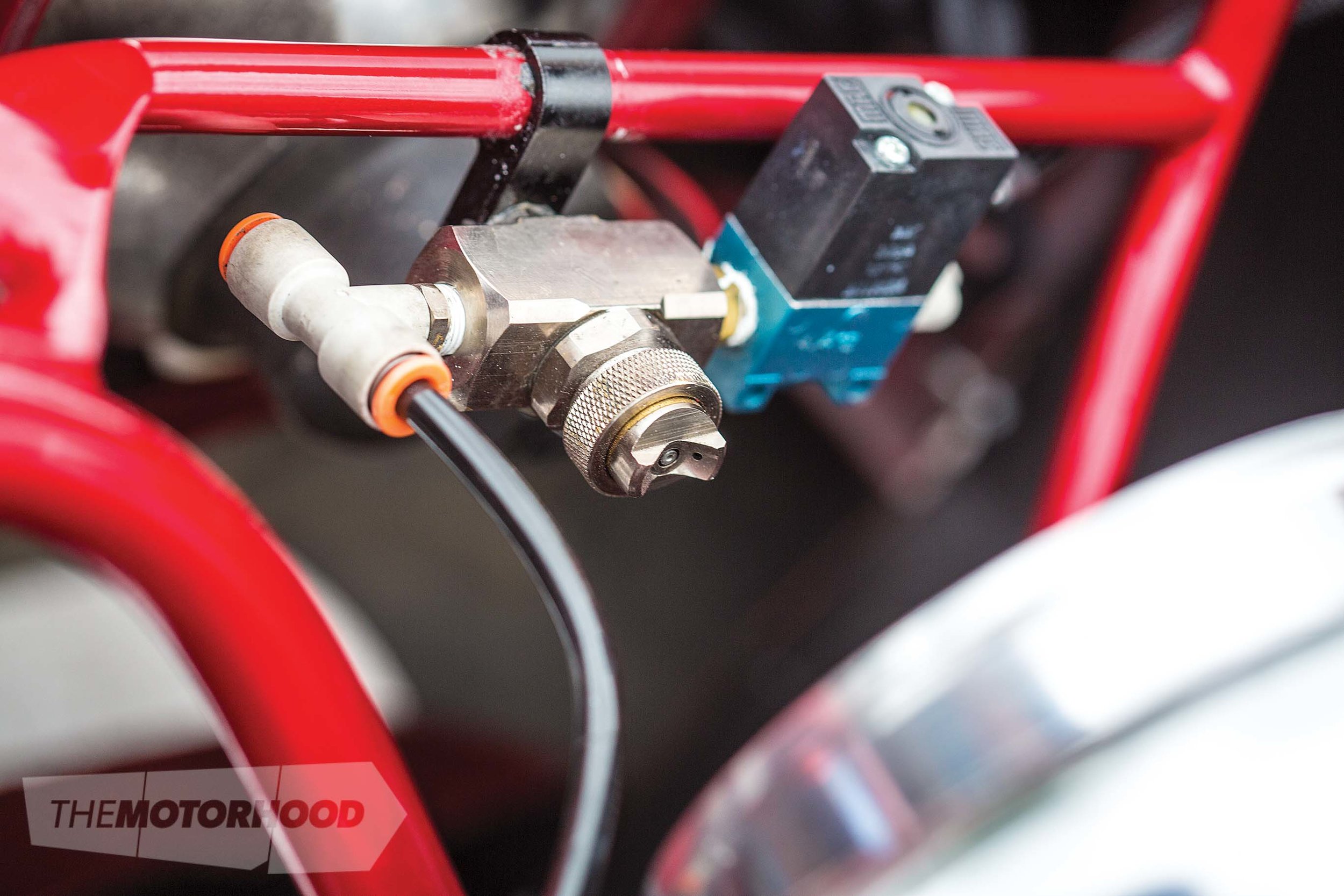
How it works
A super-fine mist of either water (demineralized is recommended) or, commonly, a 50/50 water and methanol mixture is sprayed through a low-pressure high-volume nozzle directly onto the compressor wheel. This mist has a list of jobs to do before it exits through the exhaust pipe as steam.
First, it increases turbo efficiency by cooling the compressor housing and the compressed air inside it. This happens as the mist changes state to a gas (steam), absorbing heat as it does so. Oxygen becomes denser as it cools, and the colder it is, the more air will fit in the turbo’s compressor housing. The higher in the turbo’s efficiency range you go (i.e. the more boost you dial in) the more effective this process becomes. Effectively, you can move much more mass through the turbo than stated in its specs.
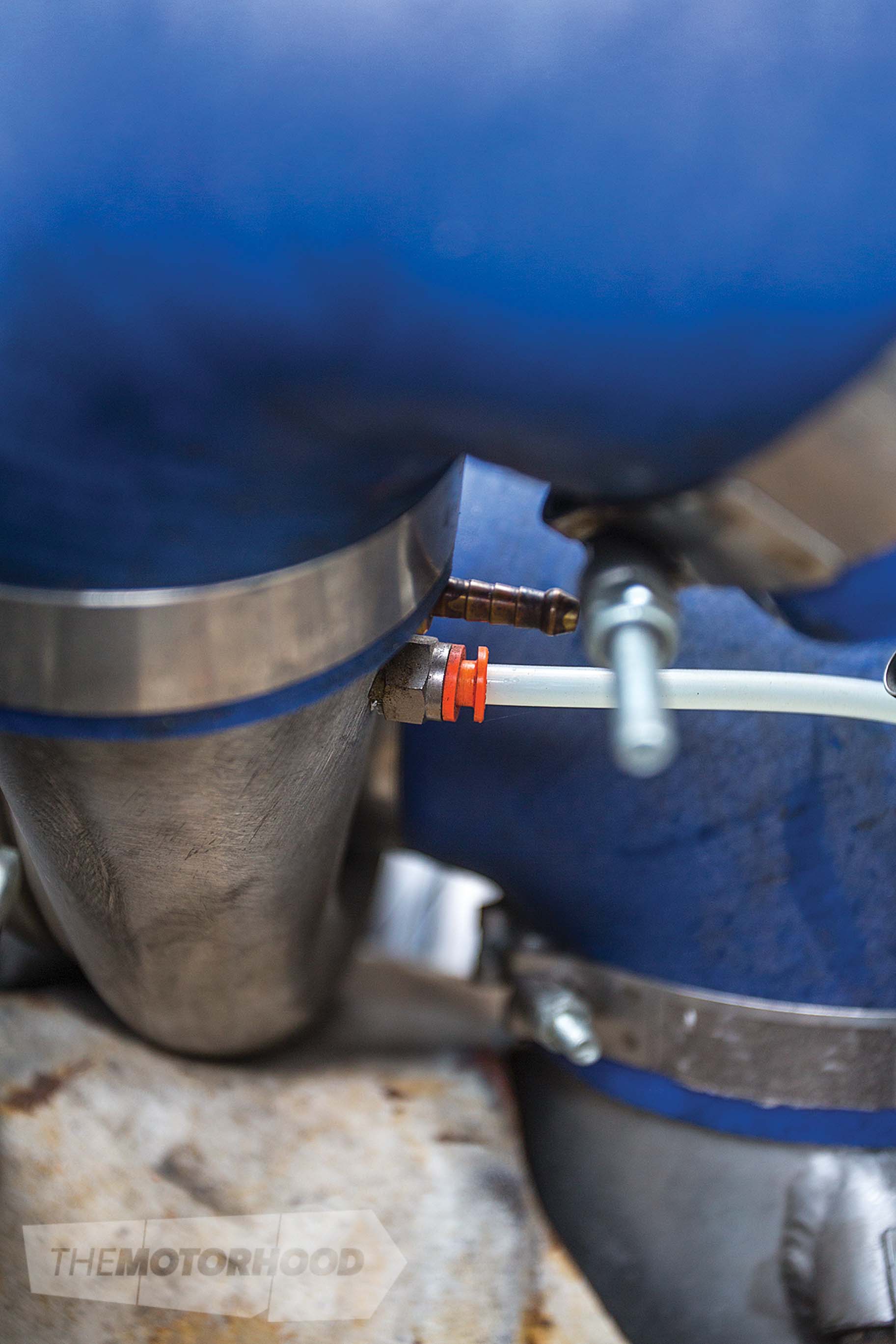
The same process happens inside the combustion chamber. As the liquid mist changes state, it absorbs heat from the chamber, lowering the temperature of the intake charge and allowing you to fit more air in. More important, the fuel burn rate slows down, thus greatly decreasing petrol’s propensity to detonate at higher combustion pressures. It is worth noting that it’s not both the water and fuel that compress; it’s only the oxygen that does. Intake-charge temperature reductions of 20°C have been noted when this set-up is used in non-intercooled turbocharged and supercharged applications.
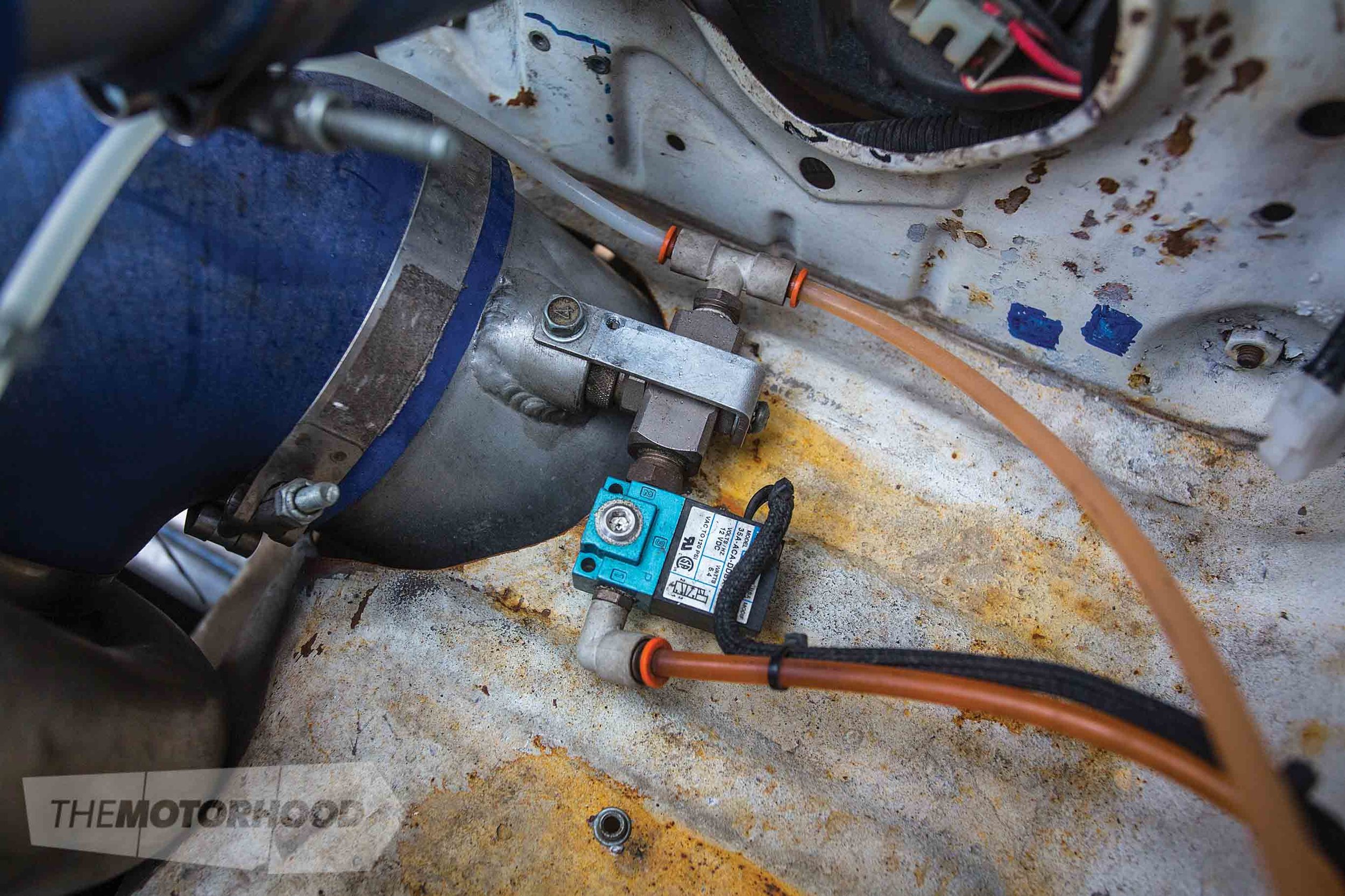
Plumbing in a kit
While a few kits are available on the internet, we are focusing on the Green Brothers’ own. It’s perfect in its simplicity, in that the vehicle’s own boost is scavenged to power the system. A small engine-bay reservoir is pressurized using a feed off the turbo’s compressor housing. The water-feed line is then filtered before passing through a small control valve, which, in this case, is a boost solenoid. This solenoid is boost activated through an auxiliary ECU output that typically triggers between 8 and 14psi. Once opened, it allows the pressurized liquid to reach the nozzle, which sprays into the compressor housing of the turbo. The system is self-mapping, since liquid flow is proportional to boost pressure. The more boost the turbo generates, the more liquid is forced through the nozzle.
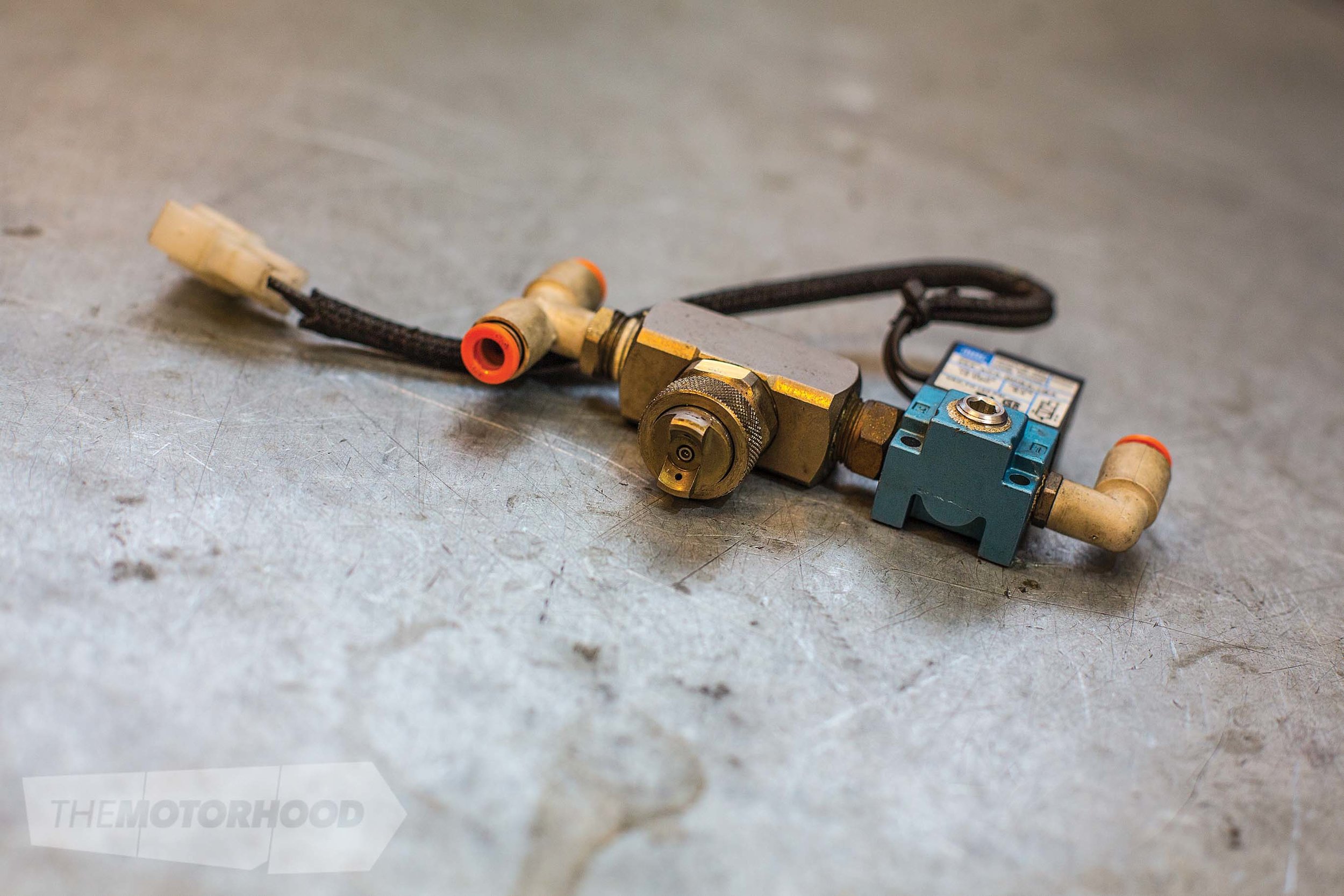
The nozzle
It’s very important that the nozzle is atomizing the liquid properly, which is why you use an HVLP (high-volume low-pressure) nozzle. A non-HVLP nozzle would require much higher pressures than boost pressure to atomize properly. Liquid droplets will do damage to the delicate impeller, which spins upwards of 100,000rpm, so the liquid should come through as more of a mist. The nozzle should be mounted 150 to 300mm from the compressor, in the intake pipe or in the middle of your filter if it’s turbo mounted, or, if you’re not running any filter, you can simply mount it directly in front of the housing.
We hope this short outline has clarified the benefits that pre-turbo water-injection units can bring to your search for extra power!
This article originally featured in NZ Performance Car Issue No. 237. You can purchase a print copy or a digital copy below:







